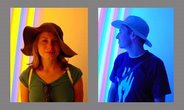The Neighborhood

Dane Larsen blogs about babies, flying elephants, and geographic contingencies

Posted by
Dane
at
10:27 AM
0
comments
![]()
Labels: Chiang Mai, living, Thailand
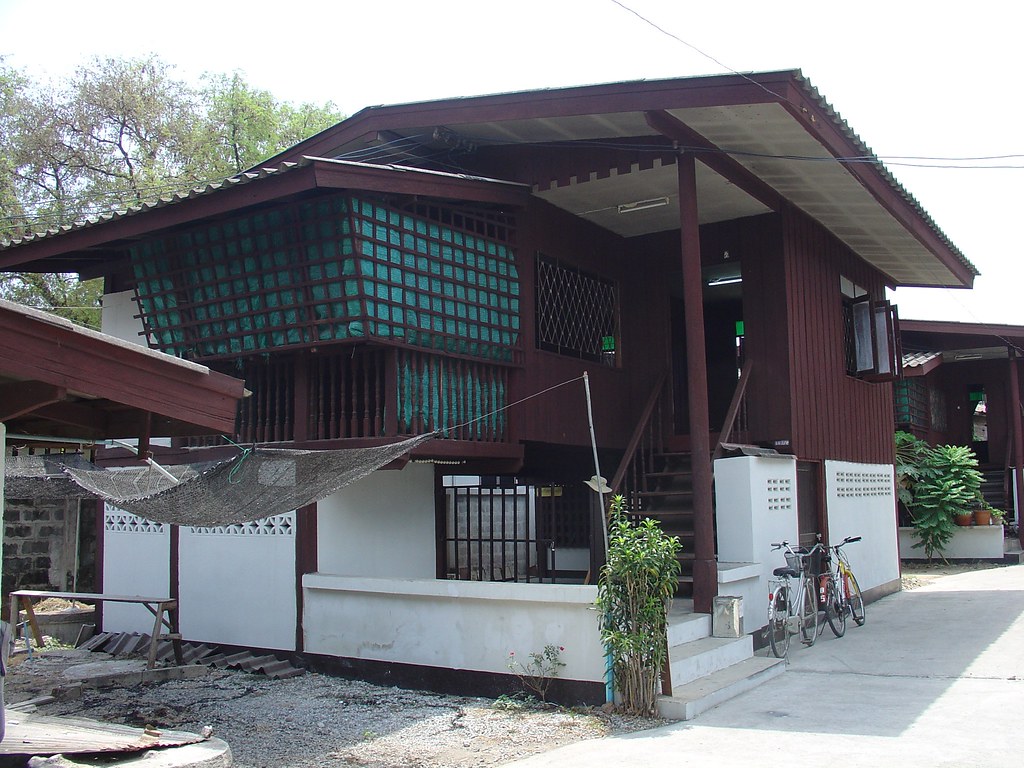
Posted by
Dane
at
8:11 AM
5
comments
![]()
Labels: architecture, Chiang Mai, living
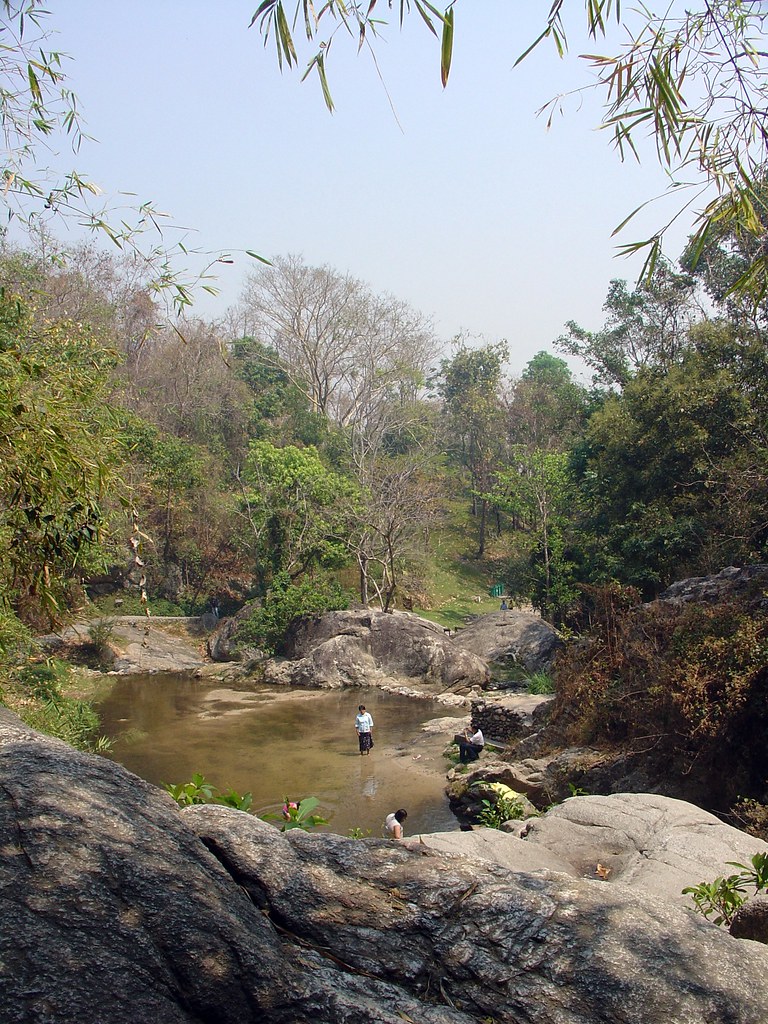
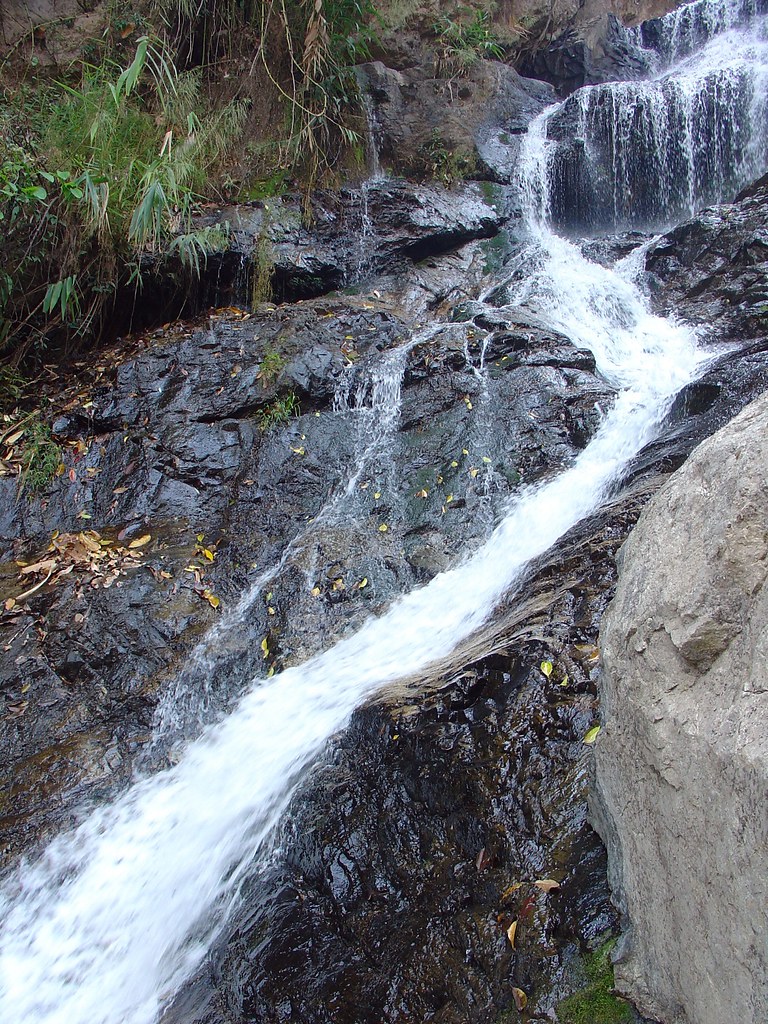
Posted by
Dane
at
1:01 AM
5
comments
![]()
Labels: Chiang Mai, living
Last weekend we went to the Chiang Mai Night Safari (we had a free ticket) and visited the little walking zoo. They had several animals you don't usually see in zoos in the the US, and we were able to get closer to them, too. Over the next few weeks I'll be posting short videos of some of the animals. The first is the clouded leopard, a critically endangered native cat here in south-east Asia, and a famously good tree climber with an unbearably cute bark/chirp.
Posted by
Dane
at
12:30 AM
0
comments
![]()
Labels: animals, Chiang Mai
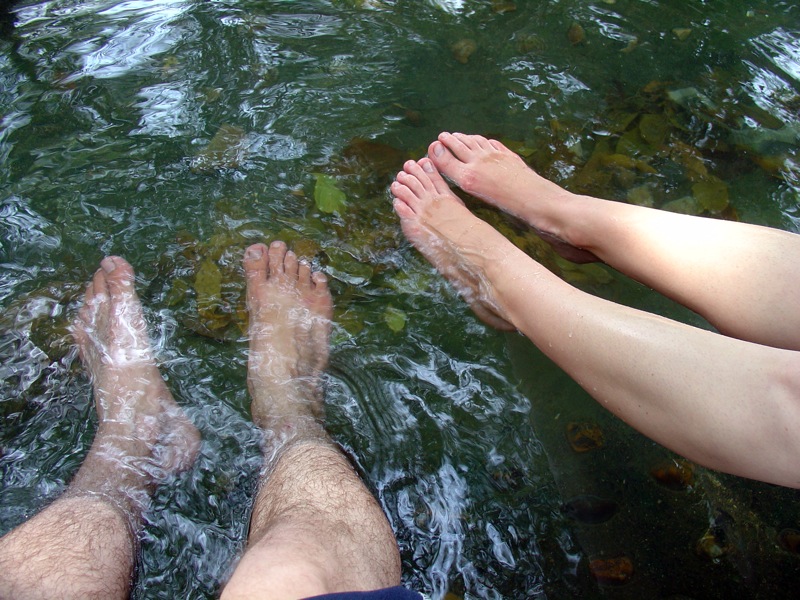
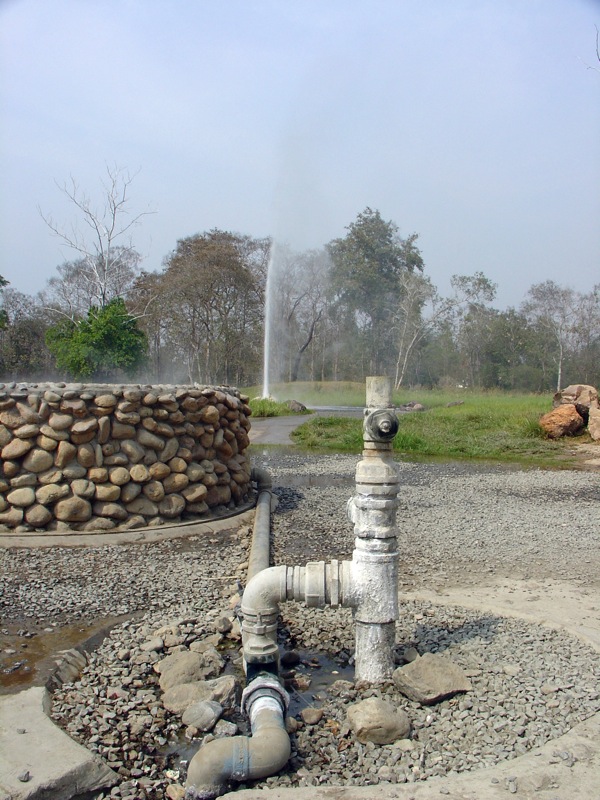 At Yellowstone we always joke about looking for the pipes. At San Kamphaeng they're out for all to see.
At Yellowstone we always joke about looking for the pipes. At San Kamphaeng they're out for all to see.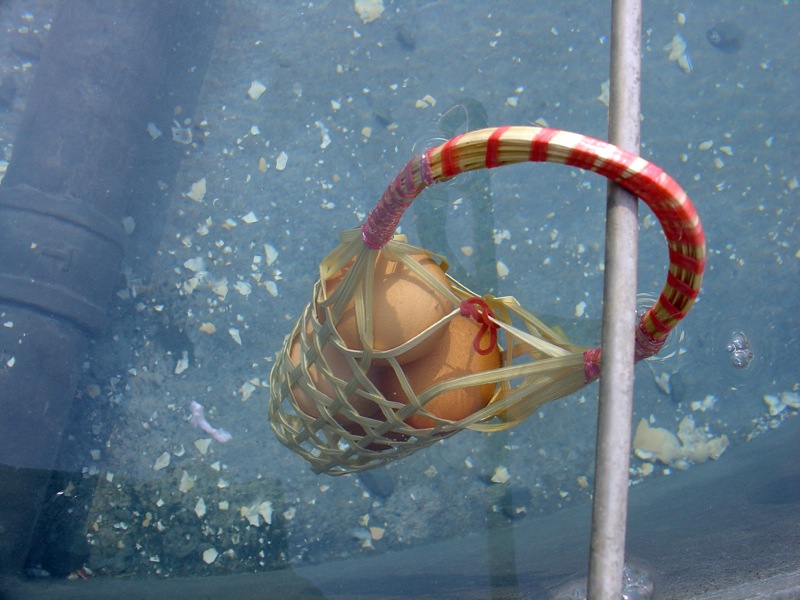
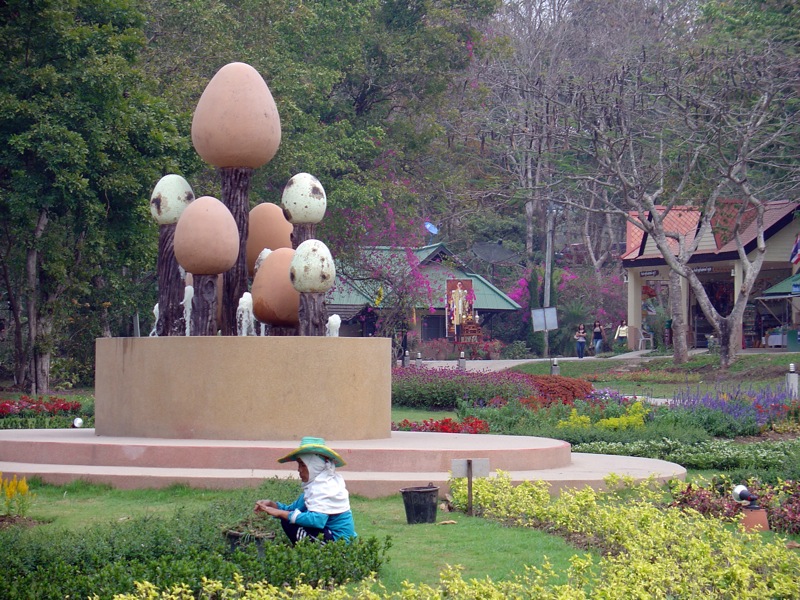
Posted by
Dane
at
3:45 AM
3
comments
![]()
Labels: Chiang Mai, food, Thailand
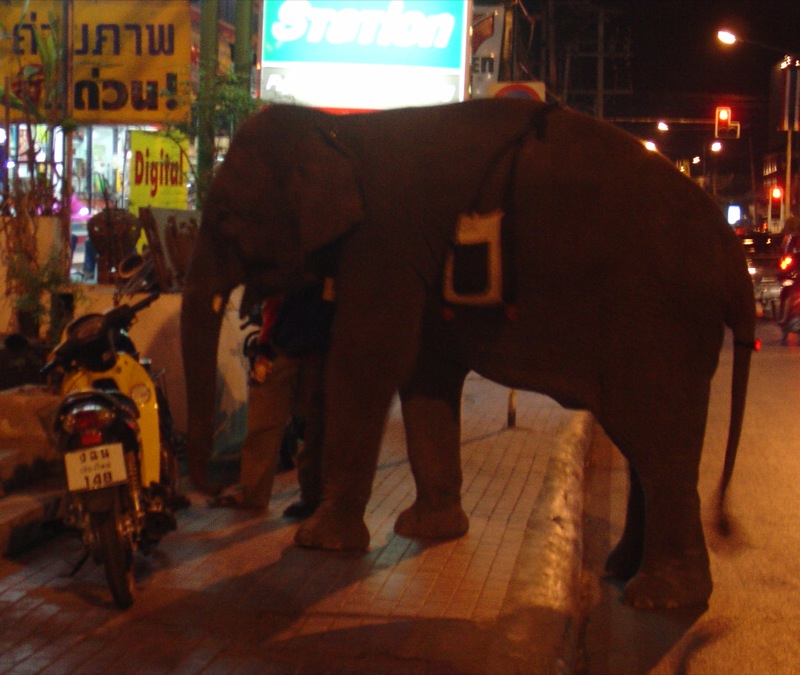
Posted by
Dane
at
6:22 AM
2
comments
![]()
Labels: animals, Chiang Mai
Yesterday Jami walked up to the room from the studio, where she'd been sewing. I was hunched (I'm always hunched as the picture below will attest) over the computer, grumbling about the fact the Google wasn't loading (an earthquake, 7 point sommething, off the coast of Taiwan had ripped through a couple bundles of fiber on the ocean floor, closing markets all over Asia, as well strangling any web traffic from the western US), and I couldn't check sources for an essay I'm writing, and trying to annotate. "Some of this music I'm listening to makes me just want to live simply. You know, without much stuff." She'd been listening to Cavedweller, in all its Lo-Fi gloriousness. So I gave up, listened to our favorite troglodyte, mentally thanked JBB and the Quist girls for introducing us to Dirk and his music, and grilled pork and pineapple on our balcony, which we ate with sticky rice. I then spent the next four hours working on drawings for a project proposal in AutoCAD. Are we living without a lot of stuff if all we actually own here are a computer, a couple of hard drives, a couple of cameras, some clothes and a handful books?
Posted by
Dane
at
9:22 PM
1 comments
![]()
Labels: Chiang Mai, living, music
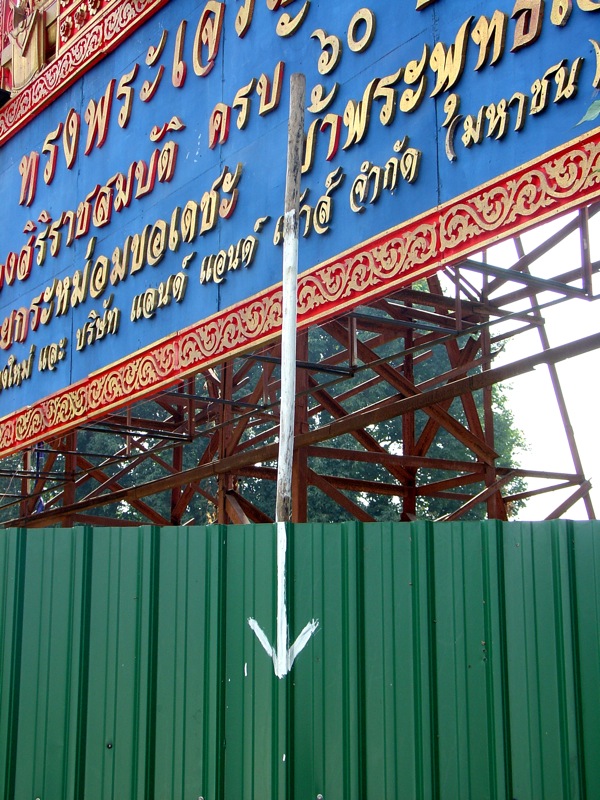 I pass this arrow on the way home from work. I like it because it's art-like, but isn't art. It may be really clever grafiti, but I think it's actually supposed to be useful somehow.
I pass this arrow on the way home from work. I like it because it's art-like, but isn't art. It may be really clever grafiti, but I think it's actually supposed to be useful somehow.
Posted by
Dane
at
5:29 AM
1 comments
![]()
Labels: art, Chiang Mai
 9 x 9 x 9 x they say it's a hundred meters;
9 x 9 x 9 x they say it's a hundred meters;
Posted by
Dane
at
3:55 AM
3
comments
![]()
Labels: art, artists, Chiang Mai
I don't know why it hadn't occured to me to do this earlier. The photo directly below is the old city of Chiang Mai, surrounded, as you can see, by its moat. Heading west/northwest from the northwest corner of the moat is a major road called Huay Kaew. You follow it west about a mile until you cross a road with a canal running down the middle.
 At the first break in the median after the canal road you turn right, and head north until the road dead ends after veering left somewhat. We're in the last town house on the left.
At the first break in the median after the canal road you turn right, and head north until the road dead ends after veering left somewhat. We're in the last town house on the left.
Umm. Please don't stalk us.
Posted by
Dane
at
11:19 AM
0
comments
![]()
Labels: Chiang Mai

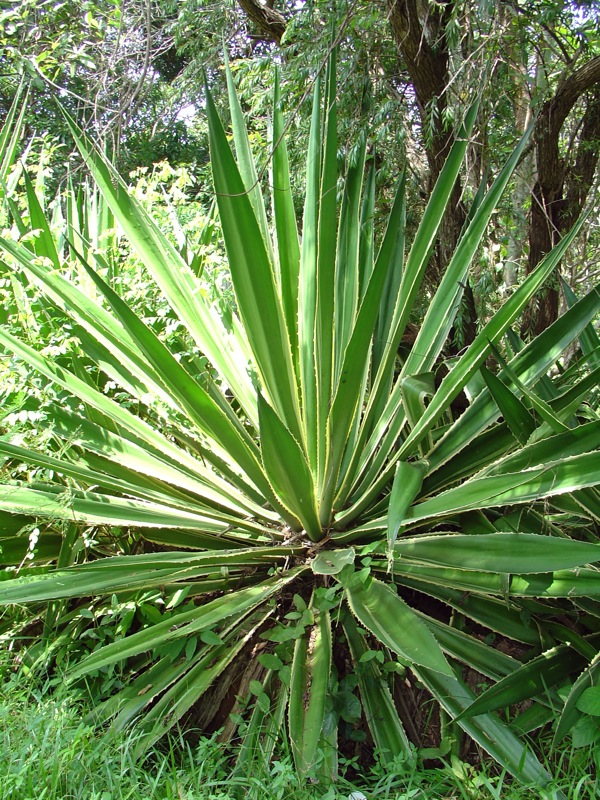 Behind our house is a road that goes up the hill (actually the base of Doi Suthep Mountain) toward a Boy Scout camp. About halfway up the hill to the camp is a living fence of enormous (I'm talking eight feet tall) variegated Agave americana. We'd stopped before to take pictures of the of the agaves, and we also like the cottage just up the road from them which is done up to look like a Swiss or German timber frame house with plaster walls. On Monday we took an afternoon walk up to the falls at the Boyscout camp (one of the Boy Scouts let us climb the tower, which gave us a great view of the university behind our house), and on our way back down, while taking pictures of the goofy Swiss chalet, a gate that looked like it was made of old window sashes caught our eye. We stopped to take a picture, but never even got the camera out when we noticed the house behind it.
Behind our house is a road that goes up the hill (actually the base of Doi Suthep Mountain) toward a Boy Scout camp. About halfway up the hill to the camp is a living fence of enormous (I'm talking eight feet tall) variegated Agave americana. We'd stopped before to take pictures of the of the agaves, and we also like the cottage just up the road from them which is done up to look like a Swiss or German timber frame house with plaster walls. On Monday we took an afternoon walk up to the falls at the Boyscout camp (one of the Boy Scouts let us climb the tower, which gave us a great view of the university behind our house), and on our way back down, while taking pictures of the goofy Swiss chalet, a gate that looked like it was made of old window sashes caught our eye. We stopped to take a picture, but never even got the camera out when we noticed the house behind it.

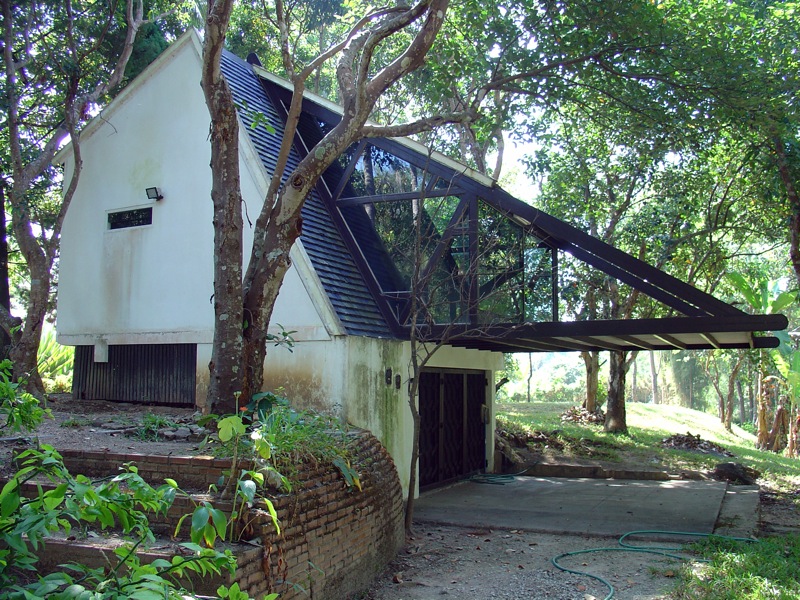
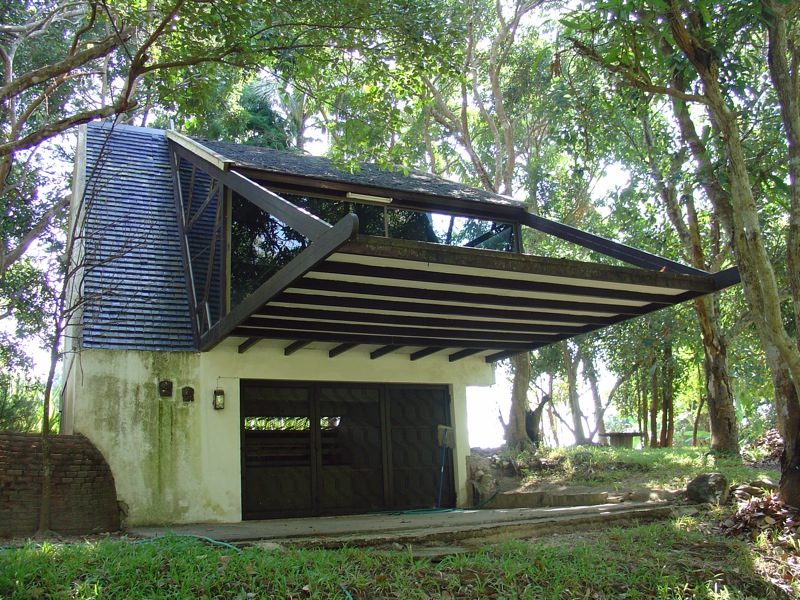 It is a tiny little modernist cabin, with a half-basement and a huge (nearly a third of the floor space on the main floor) cantilevered balcony. The kitchen is in the half-basement, with a bank of clerestory windows on the east side which tilts inward above the counter. The upper floor is a large open space with sliding doors on both sides, one opens onto the balcony, the other into the open air above the east wall of the kitchen. It's the only access to the main floor from the outside, and it's about a meter above ground, so there must be some missing stairs. The west side, with the balcony, overlooks the ravine carved by the creek that comes down out of the hills from the Boy Scout camp.
It is a tiny little modernist cabin, with a half-basement and a huge (nearly a third of the floor space on the main floor) cantilevered balcony. The kitchen is in the half-basement, with a bank of clerestory windows on the east side which tilts inward above the counter. The upper floor is a large open space with sliding doors on both sides, one opens onto the balcony, the other into the open air above the east wall of the kitchen. It's the only access to the main floor from the outside, and it's about a meter above ground, so there must be some missing stairs. The west side, with the balcony, overlooks the ravine carved by the creek that comes down out of the hills from the Boy Scout camp.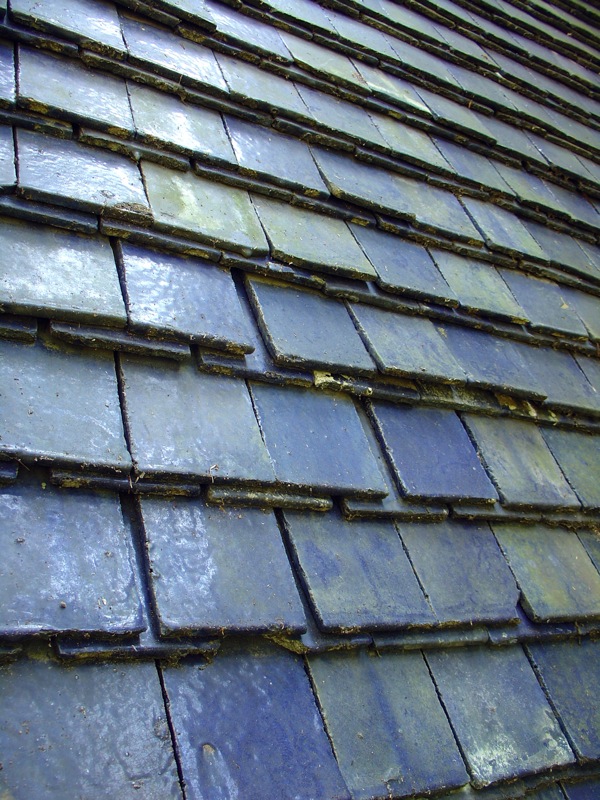 The roof is done in blue glazed ceramic tiles. Unfortunately about a quarter of them appear to be in the yard. There doesn't seem to be any water damage inside, however--at least as far as we could see.
The roof is done in blue glazed ceramic tiles. Unfortunately about a quarter of them appear to be in the yard. There doesn't seem to be any water damage inside, however--at least as far as we could see.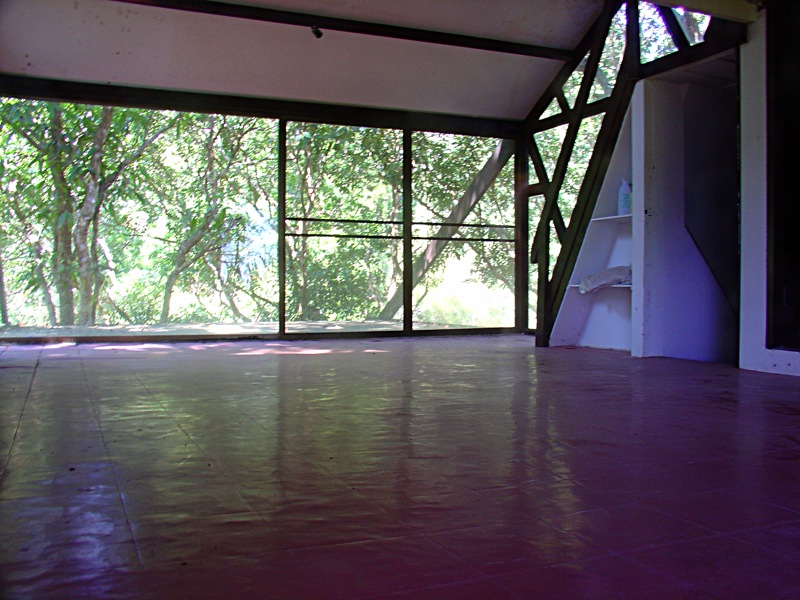
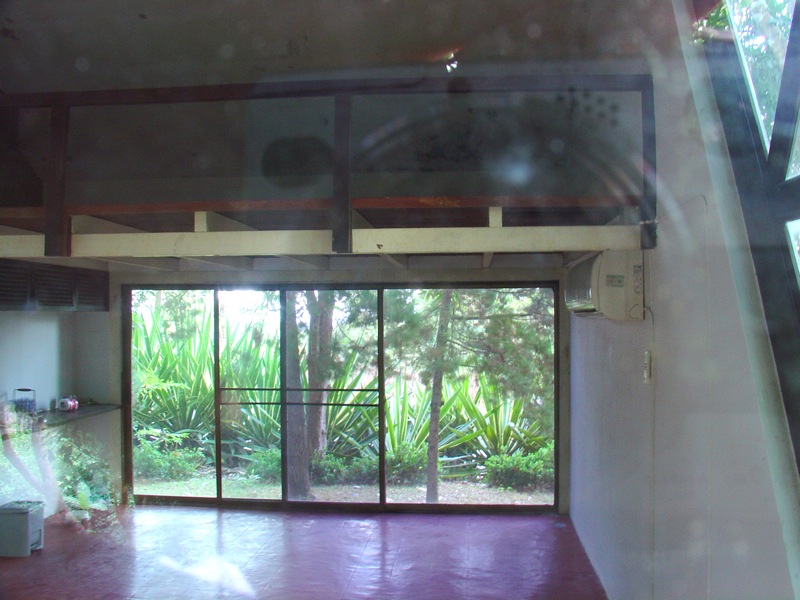 Covering nearly half of the floor space up top is a loft, ideally situated for a bedroom. It has a regular staircase leading up to it, so no falling off a ladder late at night when you're making a dash for the bathroom. Whoever designed the staircase, by the way, was brilliant. All its little nooks and crannies have been reclaimed for storage, with built-in shelves and little cupboards.
Covering nearly half of the floor space up top is a loft, ideally situated for a bedroom. It has a regular staircase leading up to it, so no falling off a ladder late at night when you're making a dash for the bathroom. Whoever designed the staircase, by the way, was brilliant. All its little nooks and crannies have been reclaimed for storage, with built-in shelves and little cupboards.
Posted by
Dane
at
11:42 PM
9
comments
![]()
Labels: architecture, Chiang Mai
